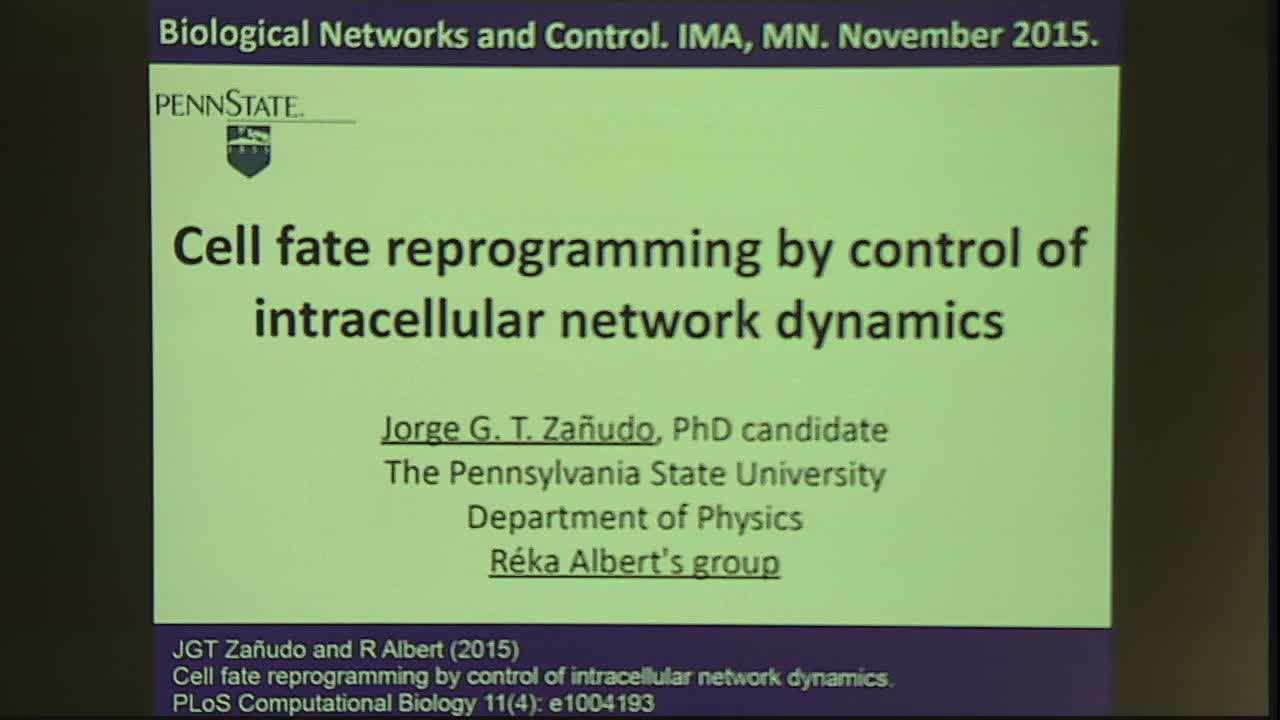Cell Fate Reprogramming by Control of Intracellular Network Dynamics
Presenter
November 20, 2015
Keywords:
- systems biology, control and systems theory
MSC:
- 47N70
Abstract
Practical applications in modern molecular and systems biology, such as the search for new therapeutic targets for diseases and stem cell reprogramming, have generated a great interest in the cell fate reprogramming, i.e., controlling the internal state of a cell so that it is driven from an initial state to a final target state. Although the topic of controlling the dynamics of a system, of which cell fate reprogramming can be considered a subset, has a long history in control and systems theory, most of this work is not directly applicable to intracellular networks. Among the main reasons for this are the nonlinear nature of intracellular dynamics and the lack of consideration of biologically admissible states. Furthermore, most control methods rely solely on the structural or the functional information available for a system, and thus, do not take advantage of the full range of biological information available for intracellular networks.
Here we present a network control method that integrates the structural and functional information available for intracellular networks to predict control targets. Formulated in a logical dynamic scheme, our control method takes advantage of certain function-dependent network components, referred to as stable motifs, and their relation to steady states, in order to identify targets whose manipulation (upregulation or downregulation) ensures the convergence of the system towards or away from a steady state of interest. Among the noteworthy properties of our approach are that it drives any initial state to the target state with 100% effectiveness and needs to be applied only transiently for the network to reach and stay in the desired state. We illustrate our method's potential to find intervention targets for cancer treatment and cell differentiation by applying it to a leukemia signaling network and to the network controlling the differentiation of helper T cells. We show that stabilizing the expression or activity of a few select components in these models can drive the cell towards a desired fate or away from an undesired fate. Moreover, we confirm the validity of the predicted control targets in a differential equation version of the tested models and also find the predicted interventions are supported by experimental work, thus suggesting our control targets are effective in a broad dynamic sense. Overall, our approach provides new insights into how to control the dynamics of intracellular networks.
